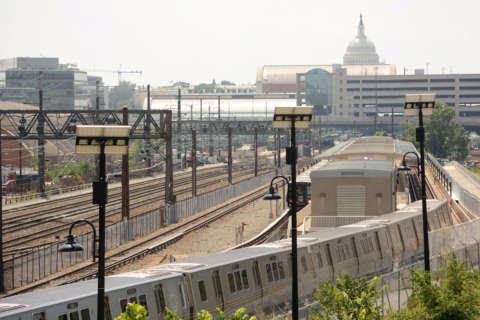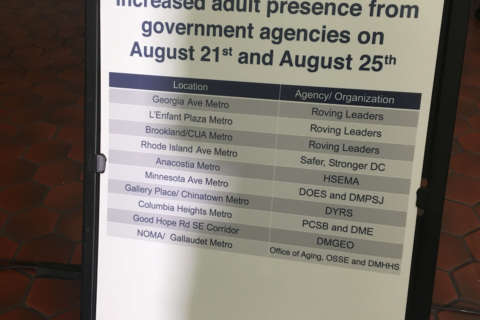WASHINGTON — Metro managers are concerned that railcar overhaul teams are not prepared to deal with significant future repairs for the new 7000 Series cars that began operating two years ago.
Supervisors interviewed for an internal Metro report said there was not enough space for the additional parts, work benches and storage in the Greenbelt and Brentwood rail yards.
The July 19 report from Metro’s Quality Assurance, Internal Compliance & Oversight office also cited “insufficient man power, lack of spare parts” and a lack of specific training courses for the hundreds of parts and components workers are expected to handle when they make repairs. The review’s findings are based on observations reported by Metro supervisors.
While the major repair and overhaul teams work on more than 700 different parts or components across all railcar series, only 45 components have maintenance-service instructions available.
The review suggests workers need more cross training on different types of repairs and more instruction beyond what is now usually limited to observing or working with a more experienced mechanic.
Quality of work
The report, which is based on a review of Metro railcar repair projects completed from October 2016 through March 2017, noted several deficiencies.
Of 18 randomly selected assessments, 12 had issues with the quality of work, leading to an overall conclusion that the repair group “is lacking” in each of four major categories.
The inspection team found 77 issues tied to quality of work, 13 related to compliance to standards, five records management concerns and one safety issue across 14 of the 18 reports from October 2016 through March 2017.
Managers said the technicians needed more specific training, according to the report. More and better manuals are needed and shop supervisors need to keep a closer eye on technicians. Long delays in obtaining parts have created issues, the report stated.
Proper manuals could “significantly reduce the chances or even eliminate most of the deficiencies found,” the report said.
Many of the major repair and overhaul steps are not formally documented, and it is impossible to tell the condition of a number of spare parts in the shops since used ones are mixed in with new ones, the report also found.
“The criteria for salvaging certain parts was too vague and inconsistent,” the report stated.
Parts taken out of the retired 1000 and 4000 Series cars were just sitting in hallways or on the floor when the inspection team was at the shops.
The inspections of some shop cranes were also out of date by up to two years, and the cranes failed to comply with federal health and safety requirements that an alarm sound before moving, the report found.
On the plus side, the report found technician training and certification records are up to date, the manuals that do exist are readily available, maintenance tools are in working order and fire extinguishers and eye washing stations are working.
Parts shortages
When key pieces of railcars were rebuilt and ready to be reinstalled, another shop sometimes removed pieces from the setup that had just been rebuilt to make a temporary repair to something else because of a shortage of spare parts, the report found.
That shortage has continued to slow the work of the major repair and overhaul teams, reducing the number of defective railcar systems that get fixed.







